Jefferson
Active member
- Joined
- Apr 21, 2012
- Messages
- 190
- Reaction score
- 28
- Points
- 28
- Location
- Southwest Missouri
- Country
- United States
This companion videos to this post are available on YouTube on my channel at: https://www.youtube.com/watch?v=KSIeHO2tRk8 AND on Bethany’s channel at: https://www.youtube.com/watch?v=ukph3psN7R4.
Well, it’s that time of year in the hills of Western Virginia. The redbuds and dogwoods bloomed and then sprouted leaves, and temperatures have hit 80 several times. The Bradford pears gave off their foul stench weeks ago, and now all the trees shimmer their bright green hues in beautiful contrast with the forest floor, slowly fading to darker shades of green with each week. This can only mean one thing: the snakes and Plethodon are emerging!
Over the last two weeks, Bethany and I have done some solid herping here in the Old Dominion everywhere from the Shenandoah NP to the hills near the North Carolina border. It started in the Shenandoah National Park two weekends ago, on a relatively chilly, overcast day. We climbed US 33 into the park from the Piedmont and got on Skyline drive, bound for some habitat rumored to play host to a healthy population of Shenandoah Salamanders, a federally-endangered Plethodon somewhat the look-alike of the Eastern Red-backed Salamander. It is found on only a handful of mountaintops in the Northern Virginia Blue Ridge.
Upon arrival at our first stop, the wind was whipping the spine of the Blue Ridge like a rag doll, and though the temperature was about 50, it felt 35. Being a self-respecting Michigander, I lent Bethany my sweatshirt as we ventured into the talus slope adjacent the parking lot and started flipping rocks. The first one revealed two Redbacks and one of our target species—Shenandoah Salamander! Bethany often remarks that I’m the world’s laziest herper physically, and this was no exception. Maximum research always equates to minimum walking time from a parking area. Ten feet from the car, our beautiful lifer, with the wavy orange stripe and darker belly than P. cinereus was found. A few yards into the woods, we happened upon several more of both the Red-backed salamanders and their rarer mountaintop competitors, including one Shenandoah Salamander that had an unusually bright stripe, side colors, and profuse brassy flecking on its tail and head. After this thirty-minute escapade of photography and quick finds, we made our way back to the car’s warmth, and cut south to a mountain stream for some unique desmogs.
Roger Hunt Conant’s classic 1970s book Reptiles and Amphibians of Eastern and Central North America curiously characterizes the seal salamanders north of I-64 on the east side of the Shenandoah Valley as a separate subspecies, the “Virginia Seal Salamander,” a variant more often of dark coloration than its southern and western neighbor. Though its taxon has been discontinued for some time based on genetic evidence, I still recognize it, even if not as a subspecies, as an interesting phenotypic variant of Desmognathus monticola, much as I still differentiate Kelley’s Island Salamanders from the other hybrid Jefferson/Blue-spots of the Midwestern states. This day, the chilly weather didn’t translate to disappointment in the stream. On its margins, where a small seep flowed in, we happened upon a couple of two-lined salamanders, a northern dusky, and one of our coveted Virginia Seals. Despite the good find, we exited quickly and re-entered the Piedmont without much delay on account of the cold.
The next Friday, the temperature hit 85 degrees and imposing clouds appeared on the southwestern horizon in the mid-afternoon, approaching the Shenandoah Valley from West Virginia. I had been telling my friend for several days that Milk Snakes were a possibility on our occasional road cruises if it rained, and I got a feeling that a good downpour might bring some Lampropeltis out to play. Upon returning home from campus, we had already received a sprinkle, but a tempest was on the horizon. One of my other friends, doubting my herping acumen, told us that, “If I were a snake, I’d be hiding now,” upon seeing the dark gray clouds. I replied, “Unless you were a Milk snake.”
We started out toward a well-cruised road along which I have seen countless Copperheads, and several Red Salamanders, Spring Salamanders, Wormsnakes, Garter Snakes, and Rattlers. The thunderstorm dropped so much rain that we decided to wait it out before continuing our drive, and when the rain relented, we set out for the road. At first, we only saw a couple of Copperheads, one alive and the other DOR, the usual fare. But after about an hour and countless toads and green frogs, a long, lanky snake appeared in the high beams. Could it be? I put on the hazards and rushed out to the snake. Indeed it was an Eastern Milk Snake! A big, beautiful one with gorgeous cross-bands, and a temperament so gentle the darn thing could have been a therapy animal. What a find!
The next day, after Bethany got off of work, we headed straight south across the Blue Ridge and into the Piedmont, where a little-travelled road is rumored to play host to the rare Scarlet Kingsnake. The temperature dropped a little below 70 by dusk, unfortunately enough to keep the snakes off the roads, but we did happen upon a beautiful middle-aged Northern Red Salamander (I saw middle-aged because the spots were beginning to fuse but had not completely done so and he still had some youthful color).
After an hour or so of cutting through the back roads, we arrived at our Airbnb in Martinsville, home of one of the South’s most prominent NASCAR tracks, just in time for the tire to go flat (talk about irony). Our host, as always, was awesome! Too tired to fix it at the moment, we changed the tire first thing in the morning before heading on our way back up into the Blue Ridge.
Blue-hued cabins lined the road as we climbed into mountaintop meadows and saw the leaves go back to the bright green that disappeared from the Piedmont last week. Our first stop at a stream to search for Virginia Dusky (also known as Flat-headed) Salamanders yielded nothing, but we pressed on to a historic grist mill where several small trickles fed into a millpond. An older couple from Minnesota, dressed like birders, videotaping their experiences, asked us what we were doing and we informed them that we were looking for salamanders, specifically the Virginia Dusky. As we herped a foot-wide, clear, boulder-strewn rivulet, they looped back around just in time to see us catch a Blue Ridge Red Salamander larvae, which they then videotaped for their records. We continued on to another set of seeps flowing into the millpond, where we saw a few juvenile Blackbelly before Bethany happened upon our quarry—the Virginia Dusky Salamander. These salamanders, restricted to three or four Virginia counties along the Blue Ridge crest, are similar in appearance to the Northern Dusky but with a smaller, flatter head and occasional mottling.
While photographing the specimen, we found a juvenile Blue Ridge Dusky and another Virginia Dusky, which due to its light coloration, we thought was a Seal Salamander at the time. After hiking around as the rain began and finding a Spring Peeper on the forest floor, we left for points west and north toward Roanoke.
Bright green foliage interspersed with the orange-blossoming flowers of flame azaleas lined the sides of the Blue Ridge Parkway as the mist hugged the mountaintop meadows and forests through which we drove. Back in the Great Valley an hour later, temperatures were ten degrees higher and conditions partly cloudy.
Our last site, an obscure park atop a small mountain in the New River Valley, was an interesting one topographically and in vegetation. The land leading to the preserve itself is covered with cattle pastureland and is gently rolling. The summit of the hill is crowned with forest, while prairie dominates below. After parking at the summit, we started down a trail roughly parallel with the topography. A few feet into the trail, Bethany spied a beautiful Eastern Garter snake with exquisite inter-scalar coloration. It appeared slumbering, but woke up after Bethany poked it with a leaf. After a short puff-bluff routine, the garter slithered into the weeds and disappeared.
Further into the forest where the undergrowth dissipated and the canopy was more complete, we found a few Red-backed salamanders, and a string of artificial cover boards drew us deeper into the woods until we happened upon a small depression in the land with rocks aplenty, a small cave opening, no wider than a large coffee can, at the bottom. Wehrle’s Salamanders, known in Virginia for their affinity for cave entrances and nearby woods, did not disappoint. We found a couple of the purplish-black Plethodon with yellowish mottling on the sides, in short order beneath the cover boards and rocks.
While I photographed our specimens, Bethany continued flipping rock sin search of a red-spotted juvenile of the Wehrle’s, our main target for the locale. She didn’t find one, but did happen upon a Northern ring-neck snake, always a nice treat.
We continued herping the varied, cave-spotted terrain for another hour or so as the day got progressively hotter and more humid, and found another normal Wehrle’s and a Redback, but none of the red-spotted variants. Even so, it was a very good stop, and we headed home to the northern valley with high spirits. What a start to May! Hope you all enjoy the weather ahead, and happy herping!
Well, it’s that time of year in the hills of Western Virginia. The redbuds and dogwoods bloomed and then sprouted leaves, and temperatures have hit 80 several times. The Bradford pears gave off their foul stench weeks ago, and now all the trees shimmer their bright green hues in beautiful contrast with the forest floor, slowly fading to darker shades of green with each week. This can only mean one thing: the snakes and Plethodon are emerging!
Over the last two weeks, Bethany and I have done some solid herping here in the Old Dominion everywhere from the Shenandoah NP to the hills near the North Carolina border. It started in the Shenandoah National Park two weekends ago, on a relatively chilly, overcast day. We climbed US 33 into the park from the Piedmont and got on Skyline drive, bound for some habitat rumored to play host to a healthy population of Shenandoah Salamanders, a federally-endangered Plethodon somewhat the look-alike of the Eastern Red-backed Salamander. It is found on only a handful of mountaintops in the Northern Virginia Blue Ridge.
Upon arrival at our first stop, the wind was whipping the spine of the Blue Ridge like a rag doll, and though the temperature was about 50, it felt 35. Being a self-respecting Michigander, I lent Bethany my sweatshirt as we ventured into the talus slope adjacent the parking lot and started flipping rocks. The first one revealed two Redbacks and one of our target species—Shenandoah Salamander! Bethany often remarks that I’m the world’s laziest herper physically, and this was no exception. Maximum research always equates to minimum walking time from a parking area. Ten feet from the car, our beautiful lifer, with the wavy orange stripe and darker belly than P. cinereus was found. A few yards into the woods, we happened upon several more of both the Red-backed salamanders and their rarer mountaintop competitors, including one Shenandoah Salamander that had an unusually bright stripe, side colors, and profuse brassy flecking on its tail and head. After this thirty-minute escapade of photography and quick finds, we made our way back to the car’s warmth, and cut south to a mountain stream for some unique desmogs.
Roger Hunt Conant’s classic 1970s book Reptiles and Amphibians of Eastern and Central North America curiously characterizes the seal salamanders north of I-64 on the east side of the Shenandoah Valley as a separate subspecies, the “Virginia Seal Salamander,” a variant more often of dark coloration than its southern and western neighbor. Though its taxon has been discontinued for some time based on genetic evidence, I still recognize it, even if not as a subspecies, as an interesting phenotypic variant of Desmognathus monticola, much as I still differentiate Kelley’s Island Salamanders from the other hybrid Jefferson/Blue-spots of the Midwestern states. This day, the chilly weather didn’t translate to disappointment in the stream. On its margins, where a small seep flowed in, we happened upon a couple of two-lined salamanders, a northern dusky, and one of our coveted Virginia Seals. Despite the good find, we exited quickly and re-entered the Piedmont without much delay on account of the cold.
The next Friday, the temperature hit 85 degrees and imposing clouds appeared on the southwestern horizon in the mid-afternoon, approaching the Shenandoah Valley from West Virginia. I had been telling my friend for several days that Milk Snakes were a possibility on our occasional road cruises if it rained, and I got a feeling that a good downpour might bring some Lampropeltis out to play. Upon returning home from campus, we had already received a sprinkle, but a tempest was on the horizon. One of my other friends, doubting my herping acumen, told us that, “If I were a snake, I’d be hiding now,” upon seeing the dark gray clouds. I replied, “Unless you were a Milk snake.”
We started out toward a well-cruised road along which I have seen countless Copperheads, and several Red Salamanders, Spring Salamanders, Wormsnakes, Garter Snakes, and Rattlers. The thunderstorm dropped so much rain that we decided to wait it out before continuing our drive, and when the rain relented, we set out for the road. At first, we only saw a couple of Copperheads, one alive and the other DOR, the usual fare. But after about an hour and countless toads and green frogs, a long, lanky snake appeared in the high beams. Could it be? I put on the hazards and rushed out to the snake. Indeed it was an Eastern Milk Snake! A big, beautiful one with gorgeous cross-bands, and a temperament so gentle the darn thing could have been a therapy animal. What a find!
The next day, after Bethany got off of work, we headed straight south across the Blue Ridge and into the Piedmont, where a little-travelled road is rumored to play host to the rare Scarlet Kingsnake. The temperature dropped a little below 70 by dusk, unfortunately enough to keep the snakes off the roads, but we did happen upon a beautiful middle-aged Northern Red Salamander (I saw middle-aged because the spots were beginning to fuse but had not completely done so and he still had some youthful color).
After an hour or so of cutting through the back roads, we arrived at our Airbnb in Martinsville, home of one of the South’s most prominent NASCAR tracks, just in time for the tire to go flat (talk about irony). Our host, as always, was awesome! Too tired to fix it at the moment, we changed the tire first thing in the morning before heading on our way back up into the Blue Ridge.
Blue-hued cabins lined the road as we climbed into mountaintop meadows and saw the leaves go back to the bright green that disappeared from the Piedmont last week. Our first stop at a stream to search for Virginia Dusky (also known as Flat-headed) Salamanders yielded nothing, but we pressed on to a historic grist mill where several small trickles fed into a millpond. An older couple from Minnesota, dressed like birders, videotaping their experiences, asked us what we were doing and we informed them that we were looking for salamanders, specifically the Virginia Dusky. As we herped a foot-wide, clear, boulder-strewn rivulet, they looped back around just in time to see us catch a Blue Ridge Red Salamander larvae, which they then videotaped for their records. We continued on to another set of seeps flowing into the millpond, where we saw a few juvenile Blackbelly before Bethany happened upon our quarry—the Virginia Dusky Salamander. These salamanders, restricted to three or four Virginia counties along the Blue Ridge crest, are similar in appearance to the Northern Dusky but with a smaller, flatter head and occasional mottling.
While photographing the specimen, we found a juvenile Blue Ridge Dusky and another Virginia Dusky, which due to its light coloration, we thought was a Seal Salamander at the time. After hiking around as the rain began and finding a Spring Peeper on the forest floor, we left for points west and north toward Roanoke.
Bright green foliage interspersed with the orange-blossoming flowers of flame azaleas lined the sides of the Blue Ridge Parkway as the mist hugged the mountaintop meadows and forests through which we drove. Back in the Great Valley an hour later, temperatures were ten degrees higher and conditions partly cloudy.
Our last site, an obscure park atop a small mountain in the New River Valley, was an interesting one topographically and in vegetation. The land leading to the preserve itself is covered with cattle pastureland and is gently rolling. The summit of the hill is crowned with forest, while prairie dominates below. After parking at the summit, we started down a trail roughly parallel with the topography. A few feet into the trail, Bethany spied a beautiful Eastern Garter snake with exquisite inter-scalar coloration. It appeared slumbering, but woke up after Bethany poked it with a leaf. After a short puff-bluff routine, the garter slithered into the weeds and disappeared.
Further into the forest where the undergrowth dissipated and the canopy was more complete, we found a few Red-backed salamanders, and a string of artificial cover boards drew us deeper into the woods until we happened upon a small depression in the land with rocks aplenty, a small cave opening, no wider than a large coffee can, at the bottom. Wehrle’s Salamanders, known in Virginia for their affinity for cave entrances and nearby woods, did not disappoint. We found a couple of the purplish-black Plethodon with yellowish mottling on the sides, in short order beneath the cover boards and rocks.
While I photographed our specimens, Bethany continued flipping rock sin search of a red-spotted juvenile of the Wehrle’s, our main target for the locale. She didn’t find one, but did happen upon a Northern ring-neck snake, always a nice treat.
We continued herping the varied, cave-spotted terrain for another hour or so as the day got progressively hotter and more humid, and found another normal Wehrle’s and a Redback, but none of the red-spotted variants. Even so, it was a very good stop, and we headed home to the northern valley with high spirits. What a start to May! Hope you all enjoy the weather ahead, and happy herping!
Attachments
-
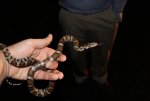 IMG_4450.jpg220.4 KB · Views: 1,442
IMG_4450.jpg220.4 KB · Views: 1,442 -
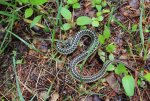 IMG_4492.jpg840.2 KB · Views: 1,303
IMG_4492.jpg840.2 KB · Views: 1,303 -
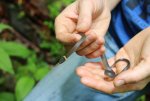 IMG_4504.jpg216.4 KB · Views: 1,135
IMG_4504.jpg216.4 KB · Views: 1,135 -
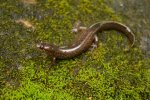 Virginia Dusky.jpg631 KB · Views: 1,350
Virginia Dusky.jpg631 KB · Views: 1,350 -
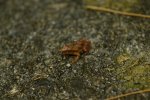 Spring Peeper at Mabry Mill.jpg417 KB · Views: 1,175
Spring Peeper at Mabry Mill.jpg417 KB · Views: 1,175 -
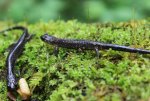 IMG_4500.jpg446.5 KB · Views: 1,221
IMG_4500.jpg446.5 KB · Views: 1,221 -
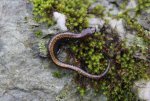 IMG_4365.jpg558.6 KB · Views: 1,371
IMG_4365.jpg558.6 KB · Views: 1,371 -
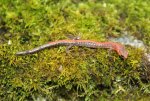 IMG_4375.jpg642.6 KB · Views: 1,259
IMG_4375.jpg642.6 KB · Views: 1,259


